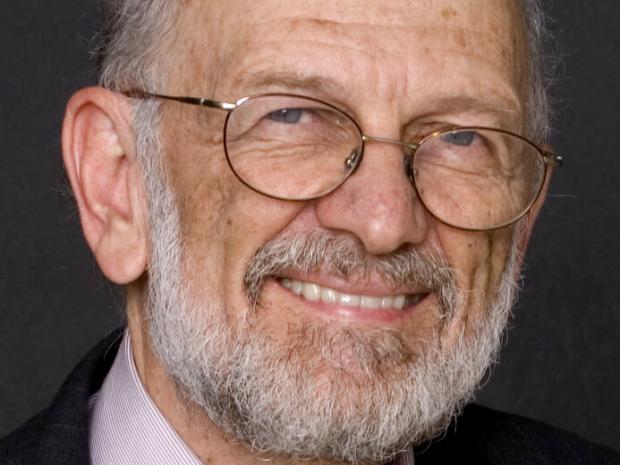Herbert Morawetz Distinguished Lecture: Intra-operative Brain Tumor Margins and Assessment by Mass Spectrometry

Lecturer: Professor R. Graham Cooks, Henry B. Hass Distinguished Professor of Analytical Chemistry, Purdue University
Refreshments: 10:30am
Lecture: 10:45am-12pm
Abstract:
Problems in chemical analysis of biological systems often seek to separate and purify individual molecular components before identification and quantitation is performed. Mass spectrometry (MS) is typically used this way for atomic, isotopic, and molecular analysis. An alternative approach is to examine intact biological systems in an imaging mode and so to recognize particular molecules or molecular classes. Besides various optical methods, mass spectrometry can be used in an imaging mode. In particular, a fine spray of solvent can be used to release molecules from a spot on a surface for analysis by MS in an experiment known as desorption electrospray ionization (DESI). This ambient ionization [1] method is performed on unmodified complex samples, specifically tissue sections or thin smears of tissue on glass slides, in air. It rapidly provides details on the metabolites and lipids present in the sample and the information can readily be compared with library data of spectra characteristic of tissue in different disease states. The emphasis of the talk is on this emerging application of MS for intrasurgical diagnosis, to identify brain tumor margins and estimate the degree of infiltration into healthy tissue. [3] DESI is applied to the analysis of tissue smears during brain surgery in order to determine the degree of infiltration of tumor into surrounding tissue, to estimate percentage of tumor cells at different sites and to identify particular oncometabolites whose presence is associated with specific tumor genetics (e.g. accumulation of 2-hydroxyglutarate in IDH mutant tumors). Some of this data is of prognostic value but not currently available by immunohistopathology until after the surgery.[1] A 50 patient intraoperative study of brain tumors is nearing completion and the findings will be summarized. Based on the speed, minimal change from current standard of practice and the otherwise inaccessible information obtained the potential for a formal clinical trial will be discussed.
The instrumentation and physical processes on which this biomedical application is based will also be discussed.
[1] Cooks, R. G.; Ouyang, Z.; Takats, Z.; Wiseman, J. M., Ambient Mass Spectrometry. Science 311 1566-1570 (2006)
[2] Jarmusch, Alan K.; Pirro, Valentina; Baird, Zane; et al. PNAS 113 1486-1491 (2016)
[3] Valentina Pirro, Clint M. Alfaro, Alan K. Jarmusch, Eyas M. Hattab, Aaron A. Cohen-Gadol, and R. Graham Cooks PNAS 114 6700-6705 (2017)
Biography:
Prof. Cooks is a world-renowned expert in mass spectrometry theory and implementation. His interests involve construction of mass spectrometers as well as studies of their fundamentals and applications. He was a pioneer in the conception and implementation of MS/MS and of desorption ionization, especially matrix-based SIMS methods. Dr. Cooks’ work on ionization methods has contributed to the field of Ambient Mass Spectrometry, in which the principal method is desorption electrospray ionization (DESI). Dr. Cooks served as President of the American Society for Mass Spectrometry. He has been honored by numerous awards from the American Chemical Society and other organizations, including the Dreyfus Award in the Chemical Sciences and Fellowships in the National Academy of Sciences and the National Academy of Inventors, and he is one of the top 100 most highly cited chemists. Prof. Cooks received a Ph.D. at the University of Natal (Kwa Zulu-Natal) Pietermaritzburg and also from Cambridge University, UK.

